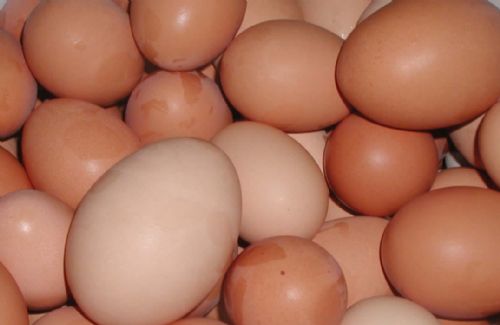
Egg producers in the United States have been accused of price-fixing for what they say is an attempt to improve animal welfare.
United Egg Producers (UEP), whose members own 95 per cent of the country’s laying hens, has been hit with a series of law suits claiming that taking birds out of production in order to move to a less intensive stocking rate was, in fact, designed to limit the supply of eggs and artificially inflate prices. UEP insists that its actions were all part of an industry animal welfare programme that was developed in response to calls from restaurants and supermarkets for better animal welfare standards.
UEP’s animal welfare programme is now at the centre of a massive legal battle forming over the price of eggs in the United States. The battle will determine whether the egg industry has violated the country’s antitrust laws. One legal action has been brought by a coalition of food wholesalers and retailers in Kansas City. Another action has been instigated in Philadephia by the food services giant Sodexo. Both law suits allege that the defendants schemed to cull flocks in order to decrease egg supplies and increase egg prices. They are similar to others that have been filed by restaurants and supermarkets.
The first suits were filed after the US Department of Justice and Federal Trade Commission confirmed that they were investigating certain producers and UEP for potential price-fixing between 2002 and 2008. They said their investigations related to an industry-wide reduction of the country’s laying flock.
Sodexo’s suit is against UEP and six major egg companies - Cal-Maine Foods, Hillendale Farms, Michael Foods, National Food Corp. of Washington, Ohio Fresh Eggs and Rose Acre Farms. Sodexo says it bought more than $250 million in eggs and egg products from these companies between 2002 and 2010. Sodexo also claims that UEP members were required by the trade group to take part in the action in order to obtain its certification stamp on their cartons.
UEP’s lawyers say that the legal action represents an attack on the trade group’s animal welfare guidelines. They have pointed out that the guidelines were implemented in response to the concerns of restaurants and supermarkets about hen welfare.
The UEP animal welfare programme operates under the name UEP Certified and is supported by the Food Marketing Institute, which represents supermarkets, and the National Council of Chain Restaurants. It was developed by an independent animal welfare scientific advisory committee, which was made up of animal ethicists and scientists, and UEP says it is designed to ensure that hens receive adequate space, nutritious food, clean water, proper lighting and fresh air daily. It says it ’improves the flock’s livability and egg production rates.’
The US Department of Agriculture, the Food and Drug Administration and the Federal Trade Commission have approved the UEP Certified logo and UEP says the International Egg Commission has recognised the programme as a model from which to create animal welfare programmes in other countries.
The UEP Certified programme was adopted in 2000 by the trade group’s board of directors. Producers then began phasing in the standards set down as part of the programme, including the requirement that cage space be expanded from 57 square inches per bird for white egg layers at the beginning of the phase-in period to 67 square inches per bird in 2008. Cage space for brown egg layers is set at 76 square inches per bird.
In 2008 producers made the full conversion to 67 or 76 square inches per bird. This involved taking birds out of production and this resulted in a decrease in egg supplies followed by a temporary increase in egg prices. Egg production in 2008 amounted to 6.403 billion dozen eggs compared with 6.435 billion dozen eggs in 2007. Egg prices averaged $1.28 per dozen in 2008 compared with $1.14 per dozen in 2007, according to figures from the US Department of Agriculture.
However, as producers began to expand production, egg supplies increased again and prices reduced. The forecast for 2011 is 6.550 billion dozen eggs. The forecast egg price for 2011 is $1.01 per dozen. The trend shows supplies up and prices down compared with 2007 levels ’ indicating that the impact of de-intensification was short-lived.
It is seen as ironic by many people that charges of manipulating the market have arisen out of attempts to improve animal welfare in the American egg industry. The first suits followed on from an animal welfare campaign in California. The campaign resulted in Proposition 2 ’ a motion voted on in California in 2008, which resulted in the introduction of the Prevention of Farm Animal Cruelty Act. The act banned small, confining crates or cages for veal calves, egg-laying hens and pregnant sows.
Whilst they were preparing for the Proposition 2 campaign, staff members at the Humane Society of the United States allegedly discovered egg industry documents that they say showed that producers were manipulating the market by collectively shrinking supply to boost prices. The society filed petitions with the Justice Department and the Federal Trade Commission and subsequently class-action lawyers filed nearly two dozen law suits. Sodexo is the latest claimant to pursue the egg industry.
As well as maintaining that its actions were designed to improve animal welfare, United Egg Producers is also claiming a defence under an American law that enables farmers to act in unison. The 1922 federal law known as the Capper-Volstead Act gives farmers the right to combine for the purpose of processing, distributing and marketing their products. UEP claims to be an agricultural co-operative formed under the Capper-Volstead Act. Courts have yet to definitively rule on whether such co-operatives can impose production limits that boost prices.
Sodexo’s lawyers claim that because businesses other than egg farmers can join the trade group the law’s protections do not apply in this situation. As a result they argue that United Egg Producers and the egg farmers are violating US antitrust laws.
